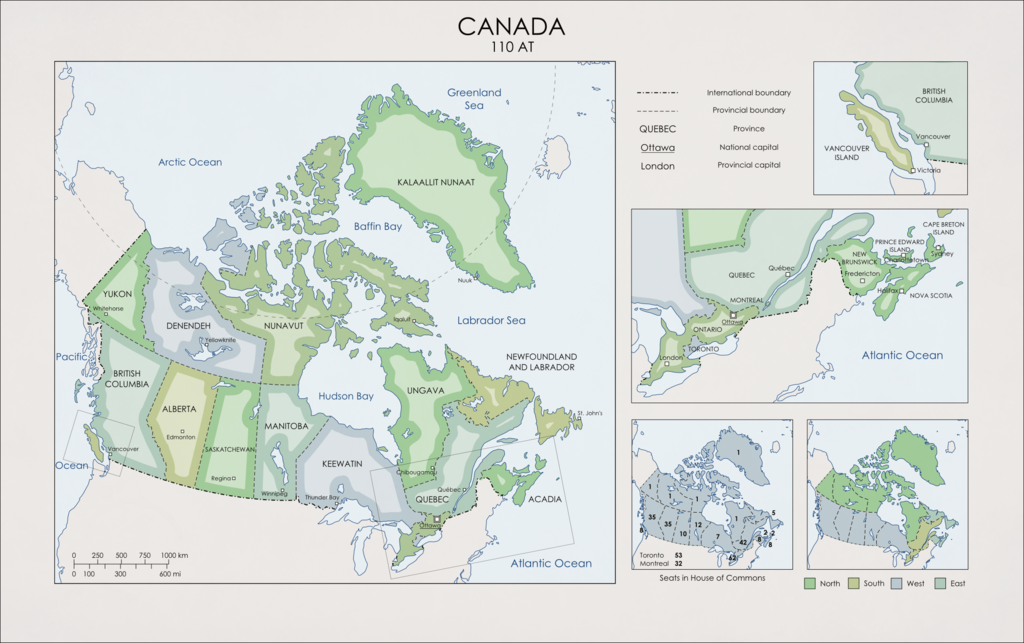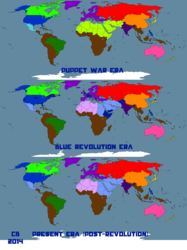Sign In
CloseDrawn by Fenn-O-maniC ( http://fenn-o-manic.deviantart.com/ )
Background:
While the 'Blue Revolution' failed in establishing any permanent replacement governments anywhere on Earth, the fact that many normally placid Canadians were so unhappy with their government that they were willing to adopt American-style revolutionary tactics sent shockwaves through the country's political elites. While the Blue institutions (eg, crowd-sourcing policies, futures prediction markets, liquid democracy, cell-phone-minute currency, etc) had been successfully sabotaged and disrupted, allowing the conventional infantry robots to be sent in to resume the peace, the various resentments that had led to the revolution (eg, massive unemployment due to ever-falling costs of automation) still simmered, and if ignored, could potentially lead to a second Blue Revolution - which just might succeed where the first one failed. Thus, the Canadian political elites acceded to the minimal amount of popular demands that seemed sufficient to keep a lid on things. The most fundamental one was instituting a Basic Income Guarantee, but as that involved opening up the Canadian constitution for amendment, a whole collection of tweaks were put together into a neo-Charlottetown Accord. One of the major changes was to completely revamp the Senate, with a single Senator from each province, plus one from the Assembly of First Nations. A side-effect of this was to inspire several provinces to start splitting up, to gain more Senators. Meanwhile, the eastern provinces decided to improve their lot by forming an inter-provincial association, to negotiate as a block with the rest of the country, but without giving up any of their provincial statuses.
An ever-increasing fear is that of a 'Crazy' secretly brewing up bio-weapons in their basement; so another portion of the Constitutional changes were to work out continuity-of-government provisions even if nearly every member of the House of Commons, Senate, governor-general and lieutenant-governors, provincial governments, Privy Council, and royal family were killed at the same time.
Meanwhile, over in Europe, Denmark was dealing in its own way with the aftermath of its portion of the Blue Revolution. Primarily to demonstrate that they 'listened to the people', the Danish politicians quickly arranged for a plebiscite in Greenland, and almost as soon as the votes were tallied, it was granted its independence. Unfortunately, due to the collapse of the fish stocks and the effects of climate change on the glaciers, the economy of Greenland (now Kalaallit Nunaat) quickly tanked. In addition, with the scramble for arctic resources heating up due to the heating up, Russia was pressing its claims to the Lomonosov Ridge, which stretched between Russia and the coastal shelf between Canada and Greenland; and it seemed entirely possible that the Russians might decide to solidify their expanded territorial claim by seizing all of Greenland itself. Canada was pushing its own claim to the Lomonosov Ridge... and so, in order to solidify their own claim to the North American side of the ridge, an agreement was struck, in which Greenland joined Canada as a province, in return for a sweetheart economic and development package for the Greenlanders. (Not to mention putting the Canadian armed forces between the Greenlanders and Russia.)
For the near future, there is serious debate in certain cities about whether to turn themselves into new "City-Provinces", with Ottawa expected to secede from Ontario any year now.
More controversially, the inhabitants of the northern halves of Manitoba and Saskatchewan are proposing to split from their parent provinces, and merge into a new province of Athabasca. The population would be 125,000 from Manitoba, and 101,000 from Saskatchewan, which would give the new province 2 seats in the House of Commons, while Manitoba would lose 1. The new province would be part of the northern block, along with Nunavut and Ungava, which many existing provinces feel is already over-represented in the Senate. As creating a new province requires the assent of both the House of Commons and the Senate (as well as either the provincial legislature's approval or a plebiscite of the affected area), this may be the first proposal for a province to fail since the new procedures were put into place.
House of Commons Seats: 1 per province, plus 1 per full 150,000 population.
(The '150,000' changes at each census, to keep the HoC between 300 and 400 members.)
House of Commons Total: 326 seats
Senate Seats: 1 per province (20), plus 1 for Assembly of First Nations.
Senate Total: 21
Regional Distribution:
North/First Nations: 5/326 HoC, 6/21 Sen
West/Prairies: 107/326 HoC, 6/21 Sen
South/Core: 189/326 HoC, 4/21 Sen
East/Maritimes: 25/326 HoC, 5/21 Sen
Submission Information
- Views:
- 697
- Comments:
- 0
- Favorites:
- 1
- Rating:
- General
- Category:
- Visual / Digital




